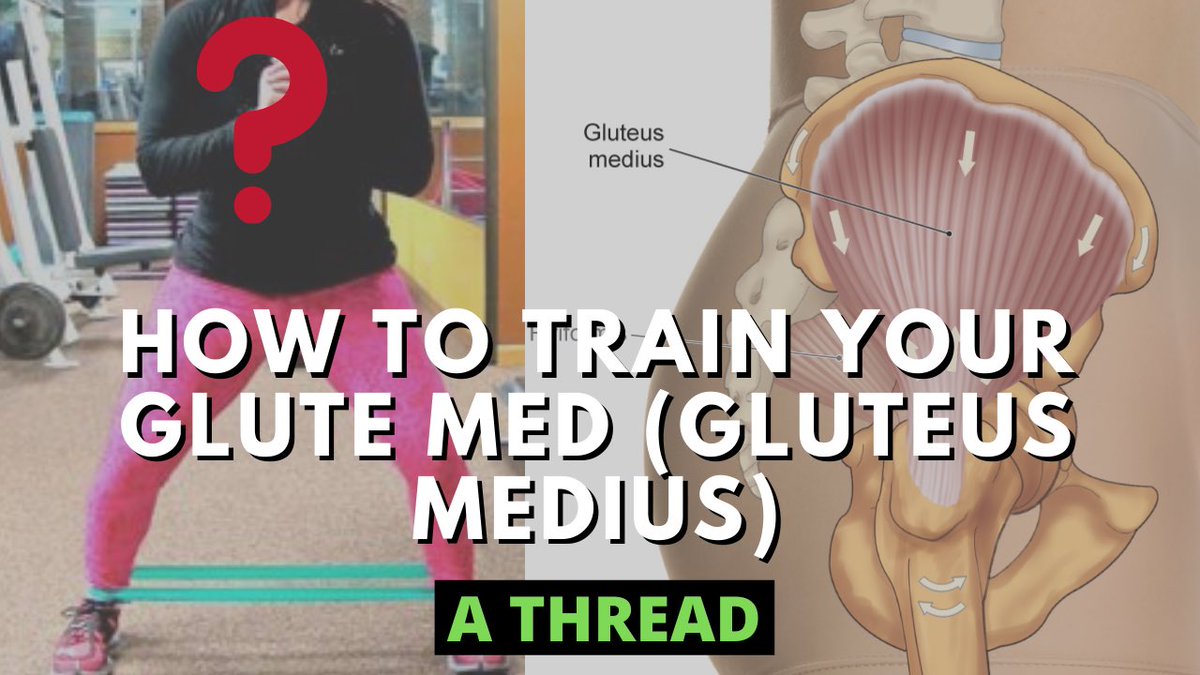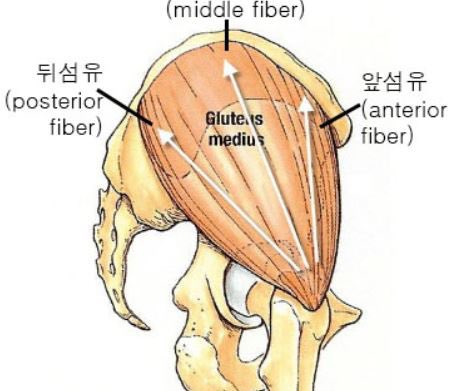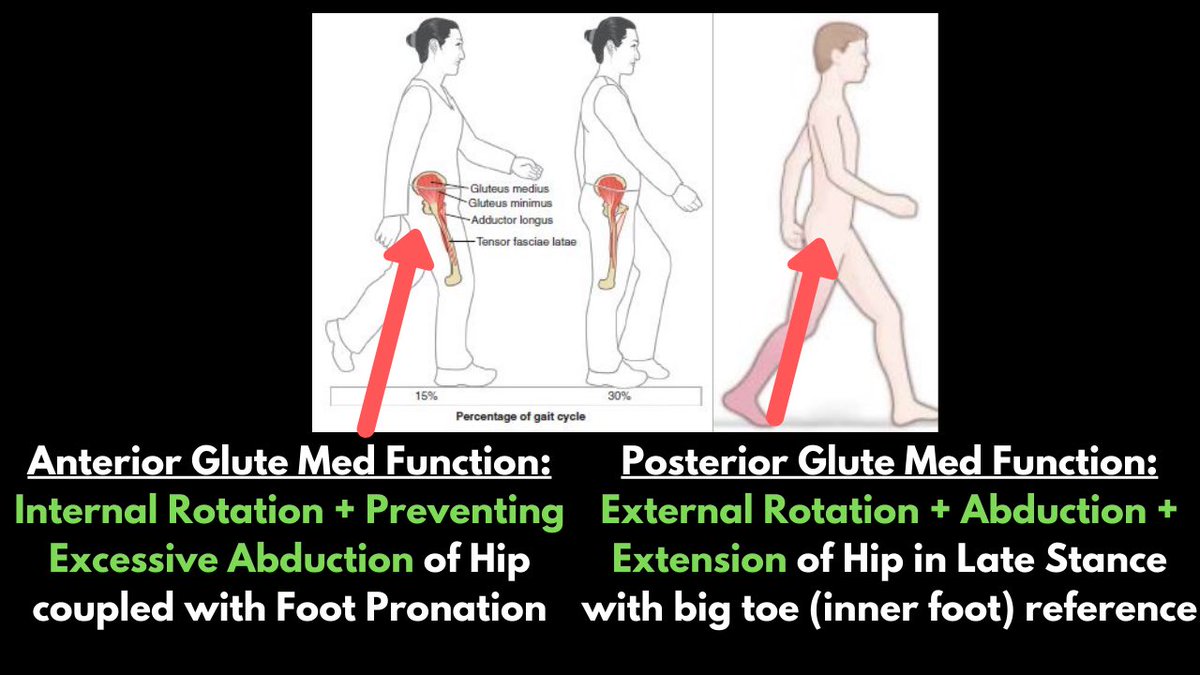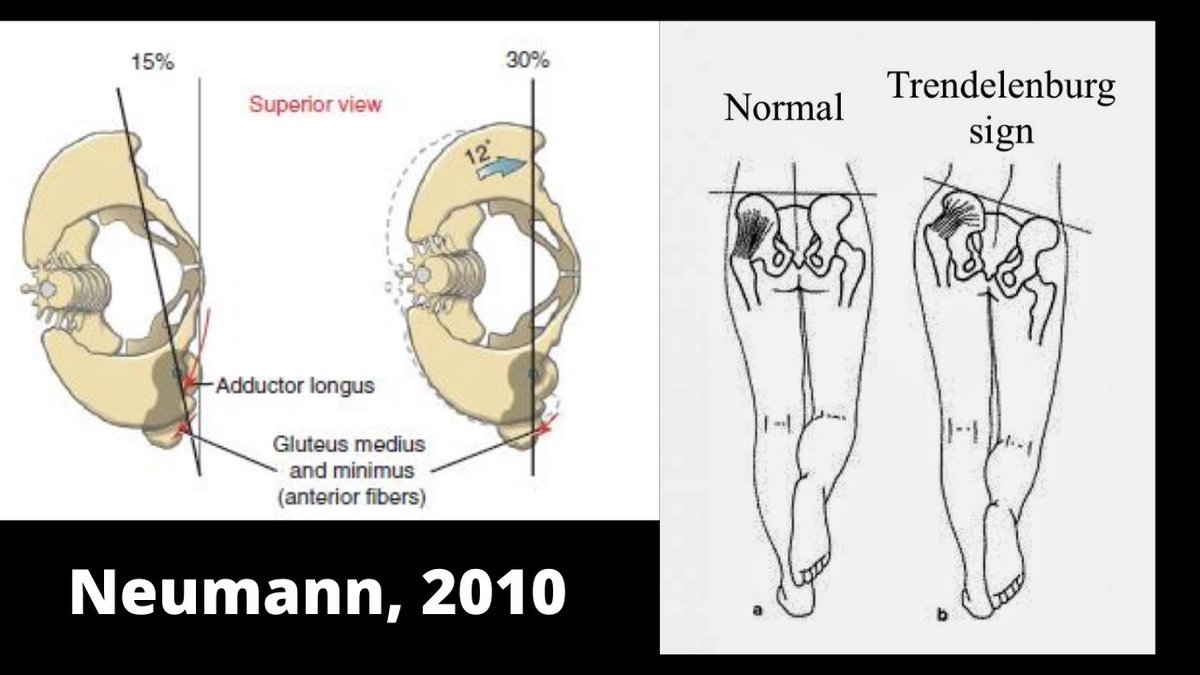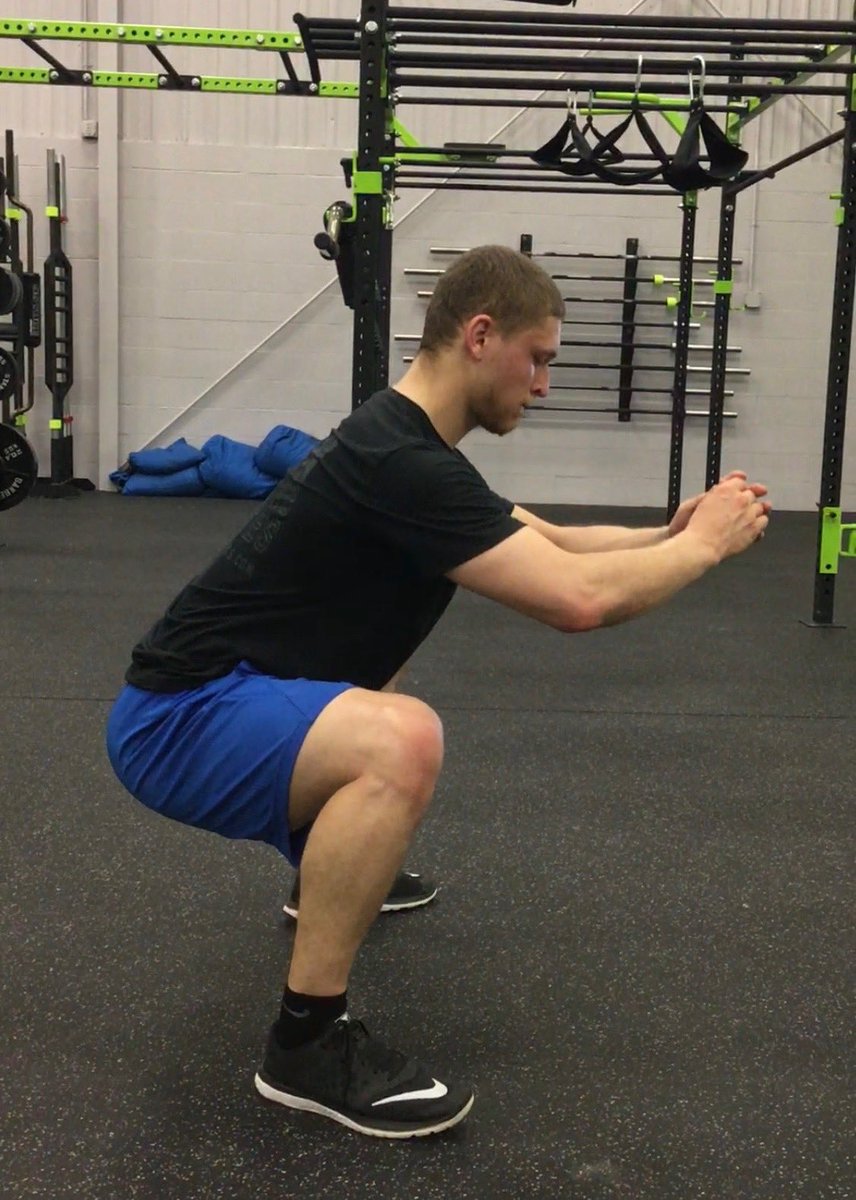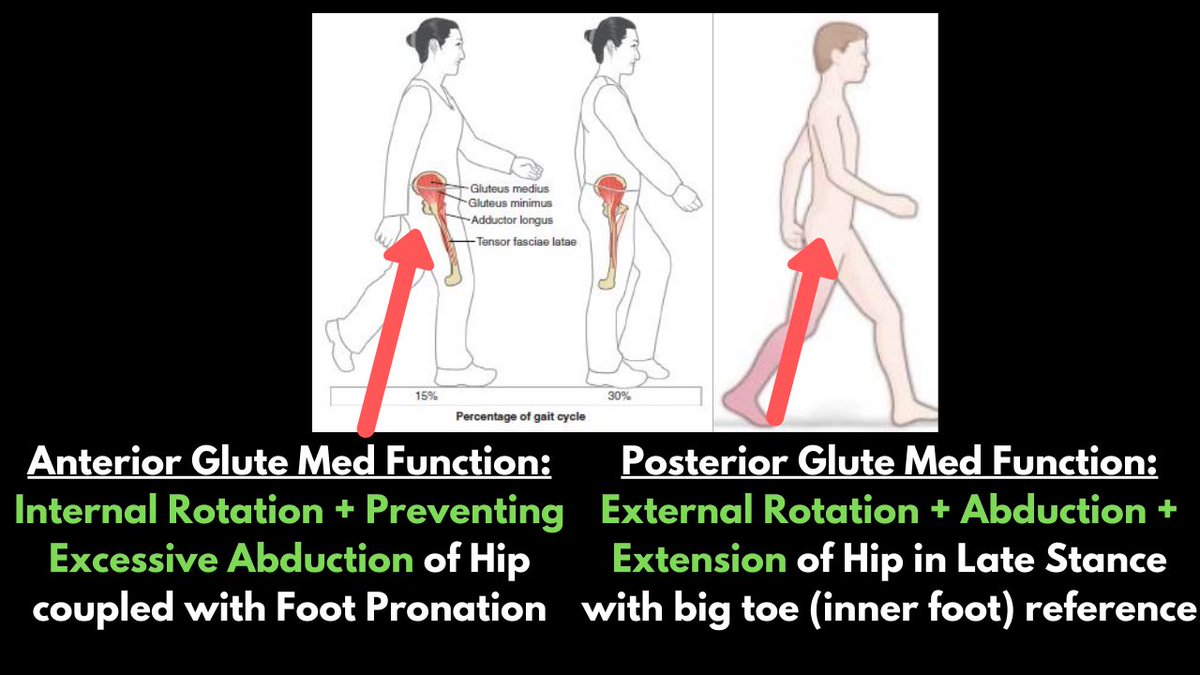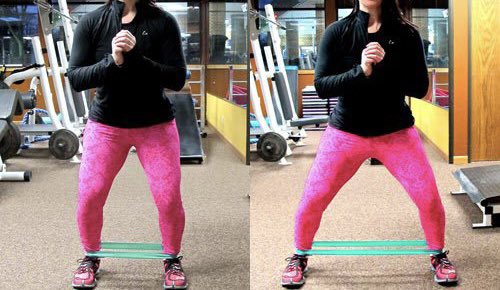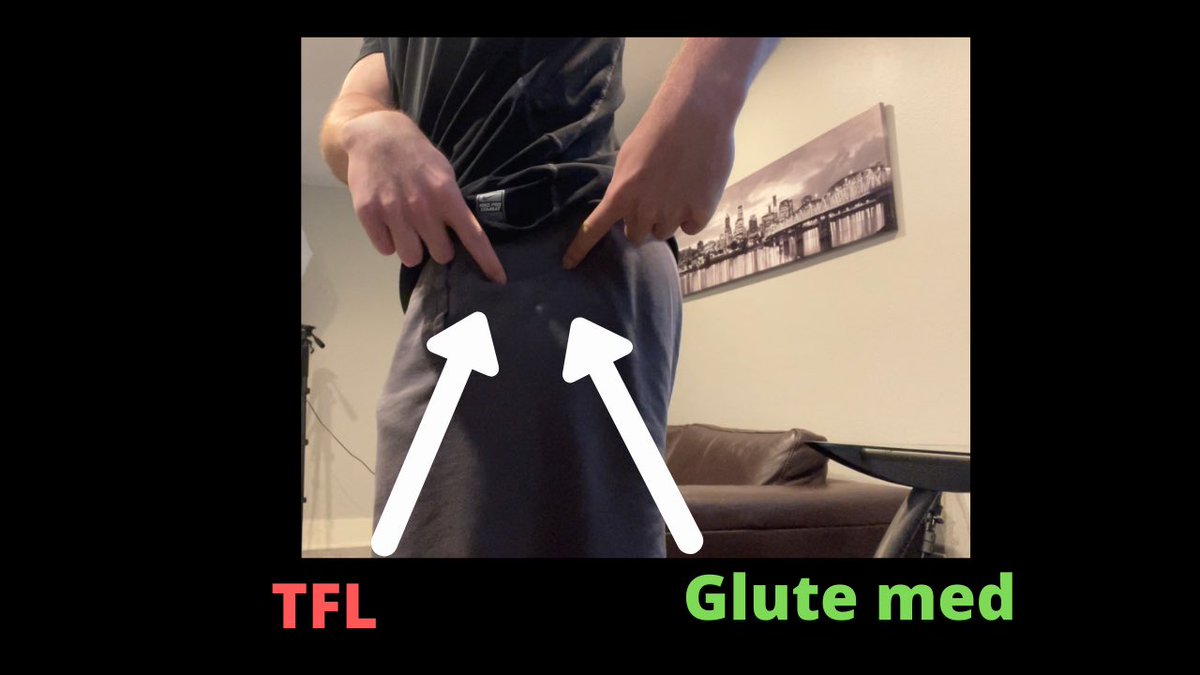A thread on how to train your Gluteus Medius
What if I told you mini-band walks aren’t enough for training & “activating” the glute med?
Most people think of the glute med as an abductor, but it’s so much more than that and has many roles (Levangie, 2010). It actually..
What if I told you mini-band walks aren’t enough for training & “activating” the glute med?
Most people think of the glute med as an abductor, but it’s so much more than that and has many roles (Levangie, 2010). It actually..
has different types of fibers:
- Anterior fibers = Internal rotation, abduction
- Posterior fibers = Abduction, external rotation, extension
It’s also active throughout much of gait and running.
In gait, the pelvis moves around a fixed leg that is in the ground.
- Anterior fibers = Internal rotation, abduction
- Posterior fibers = Abduction, external rotation, extension
It’s also active throughout much of gait and running.
In gait, the pelvis moves around a fixed leg that is in the ground.
As the pelvis moves over the femur in mid-stance, the glute med and other hip internal rotators like the TFL position the pelvis directly over the femur, and prevents the pelvis from excessively falling out to the side.
During this phase, the opposite leg is swinging through.
During this phase, the opposite leg is swinging through.
Without adequate support from the glute med, the pelvis and trunk likely drop uncontrollably toward the side of the swinging limb.
This often results in what is called a Trendelenbrug Sign.
This often results in what is called a Trendelenbrug Sign.
The role of the glute med also depends on the level of hip flexion.
For example, when in 90 degrees of hip flexion (thigh parallel to floor in squat), the glute med has *eight times* more leverage to be an internal rotator of the hip.
It can abduct at any level of hip flexion.
For example, when in 90 degrees of hip flexion (thigh parallel to floor in squat), the glute med has *eight times* more leverage to be an internal rotator of the hip.
It can abduct at any level of hip flexion.
In mid-stance, the foot should be pronated/arch drops. If we’re not considering that, we’re not training it in a manner more specific to human movement.
In late stance, the posterior glute med has a brief moment of activity to abduct the hip while the hip is in extension and
In late stance, the posterior glute med has a brief moment of activity to abduct the hip while the hip is in extension and
the big toe (inner foot) is pushing away.
So, mini-band lateral walks aren’t the best choice because they promote lateral foot reference and abduction of the hip while still in hip flexion.
So, mini-band lateral walks aren’t the best choice because they promote lateral foot reference and abduction of the hip while still in hip flexion.
When I see weakness of the glute med, the Tensor Fasciae Latae (TFL) loves to try to take over.
It can be hard from a sensory standpoint to differentiate the anterior fibers of the glute med from the TFL.
So what I will tell people is they should feel the side of their butt:
It can be hard from a sensory standpoint to differentiate the anterior fibers of the glute med from the TFL.
So what I will tell people is they should feel the side of their butt:
A great way to integrate the glute med into training would be to incorporate positions that mimic mid-stance.
A banded step down is a great choice here. We’re spending more time in deep levels of hip flexion ~90 degrees and training the anterior glute med to resist excessive
A banded step down is a great choice here. We’re spending more time in deep levels of hip flexion ~90 degrees and training the anterior glute med to resist excessive
abduction while keeping the pelvis over femur in internal rotation.
Research suggests (Reiman et. al, 2012) the glute med produces highest activation during activities like:
- A single leg squat (IR fibers. See above)
- Side plank with leg lift (abduction & extension fibers).
Research suggests (Reiman et. al, 2012) the glute med produces highest activation during activities like:
- A single leg squat (IR fibers. See above)
- Side plank with leg lift (abduction & extension fibers).
Another activity to get the posterior glute med to work in hip extension and mimic late stance mechanics would be a rear foot elevated split squat with a same-side load.
This forces the individual to balance and find their inner foot so they don’t fall out to the side.
This forces the individual to balance and find their inner foot so they don’t fall out to the side.

 Read on Twitter
Read on Twitter